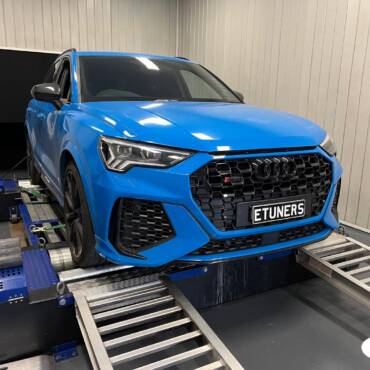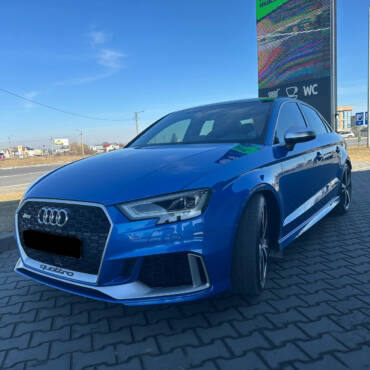Having worked and gathered data from many of the pre facelift and facelift Audi RS3 8V that have received our ECU remap, we thought this article will help RS3 8V owners understand why having an intercooler upgrade is a wise decision. The stock Audi RS3 8V intercooler unit easily overheats on dyno and at the track after a few passes, leading to major power loss and bad performance. The more we try to squeeze power out of the engine, the easier the intercooler heats up. Once it has reached core saturation temperature (above 55-60C), there is no way to get rid of the excessive heat that the turbo produces under load and performance goes down the drain.
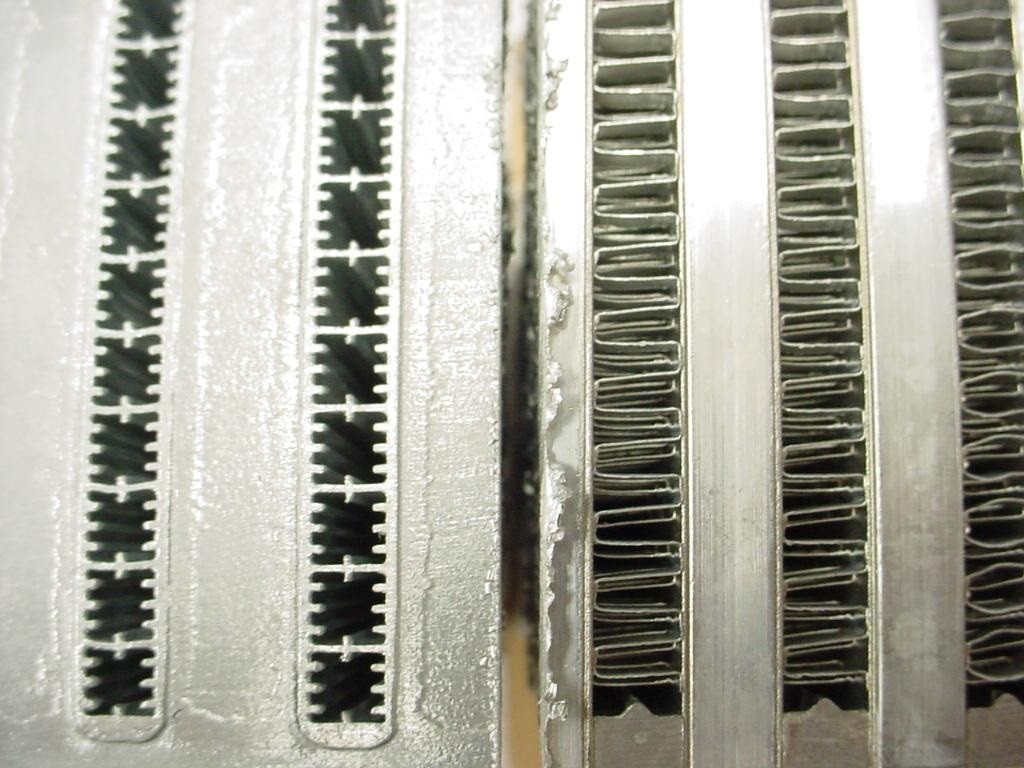
Upgraded Intercooler core technologies available for the RS3: Tube and fin versus Bar and plate
Here’s a brief note of an intercooler’s role in a forced induction setup. The intercooler acts as a heat exchanger, located between the turbocharger and the intake manifold ducting. The main purpose of an intercooler is to expel heat out of the intake charge the turbocharger produced when air is compressed. By doing so, the reduction of temperature makes the intake charge denser. Denser intake charge will make more power. Reduced intake charge also reduce the chance of knock/detonation.
For Audi RS3 owners, there’s a few option for upgraded intercoolers. There are 2 types of intercooler core construction: one being a tube and fin and the other one bar and plate construction (as shown above).
As a side note, Audi RS3 8V facelift owners (DAZA, MY2017 onwards) can use pre facelift intercoolers as the construction of the front end is identical to the old one. However, take note that North American RS3s have different crash bars and may require trimming due to fitment issues . Picture below shows an OEM intercooler, versus an upgraded bar and plate construction intercooler, manufactured by Forge Motorsport.
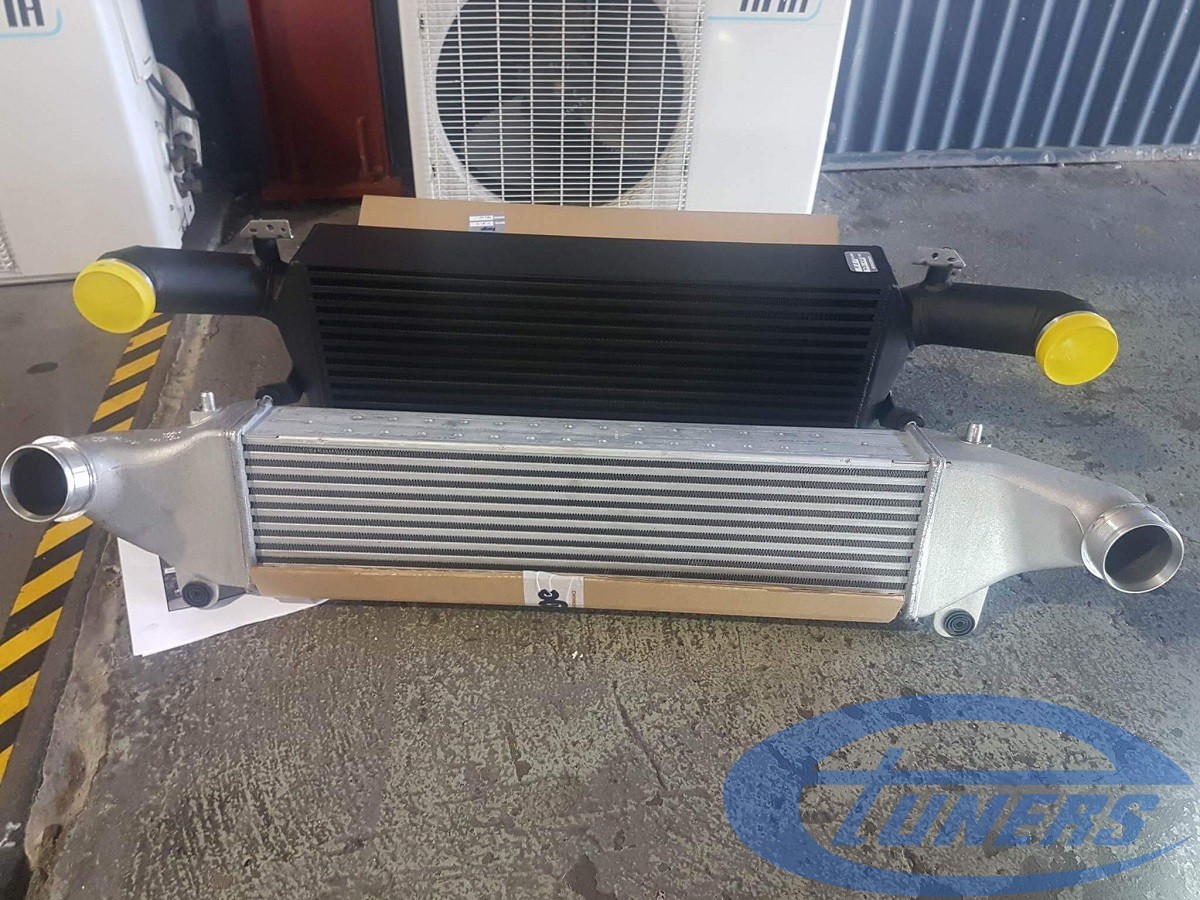
Audi RS3 8V : Stock intercooler and the upgraded intercooler from Forge Motorsport
As you can see, the surface area of the upgraded intercooler is greatly increased when compared to the factory intercooler. Whilst the factory intercooler work just fine with a factory ECU calibration, it struggled big time to remove heat, especially with a stage 2 calibration. With an ambient air temperature of 26c, inlet air temperature would creep from 42c to 60c pretty quick after 2 hard runs. On the other hand, an upgraded intercooler, whether it’s a tube and fin or bar and plate construction core, inlet air temperature stayed around 38c after several runs.
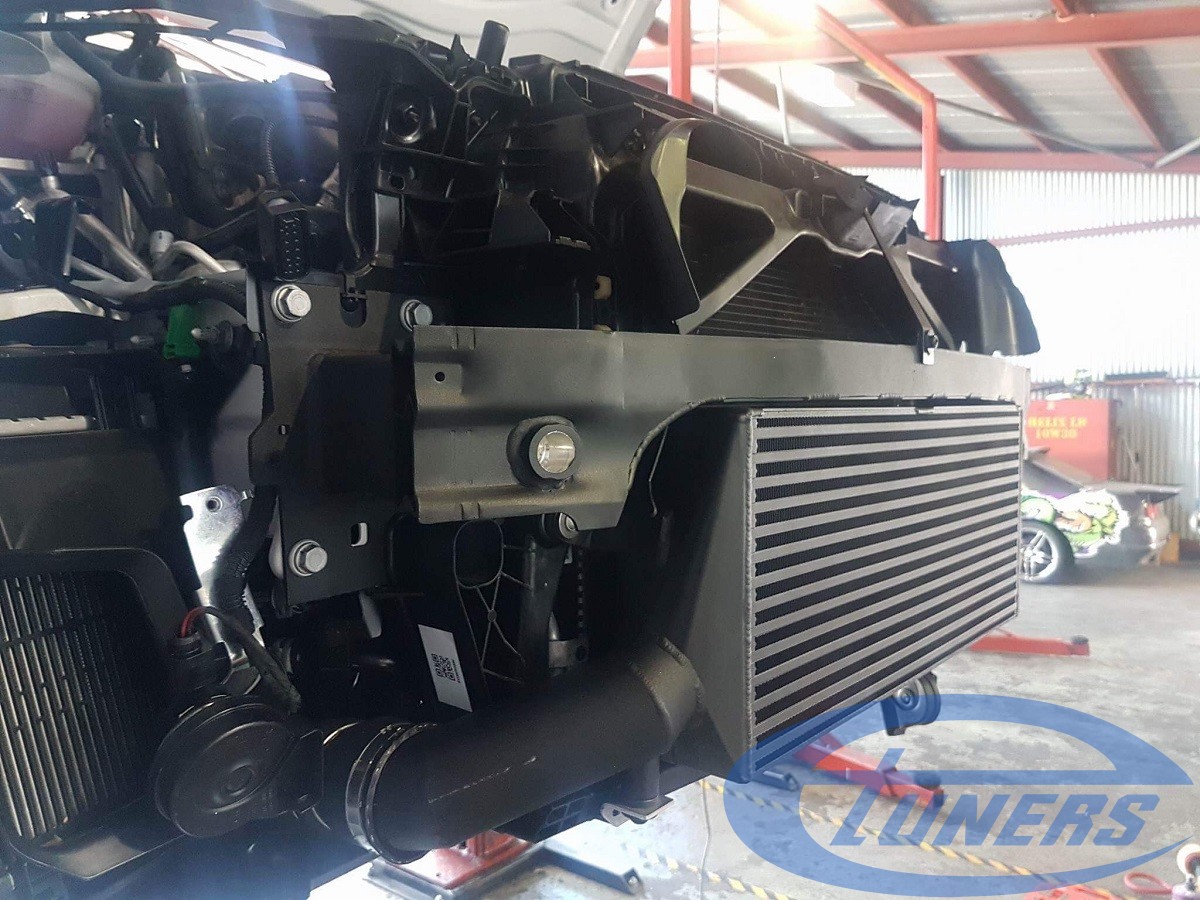
It is not easy to decide which type one works best. We gathered data from 2 RS3s with absolutely identical setups except one having a bar and plate intercooler and the other a tube and fin type. We were expecting to see a difference in peak torque and power but there was only 1kw difference between them.
These findings may be applicable to other vehicles as the same principle applies to all forced induction setups out there.
Upgrade Options available in the market
- Forge Motorsport
- Audi RS3 8V by HF Series – HG Motorsport
- 8v facelift IMS RS3/TTRS Intercooler by Iroz Motorsport
- Audi RS3 8V EVO3 Competition Intercooler Kit by Wagner Tuning
- AIRTEC Intercooler For Audi RS3 8V
